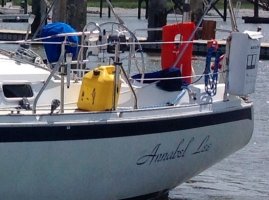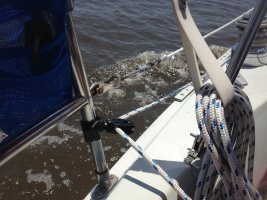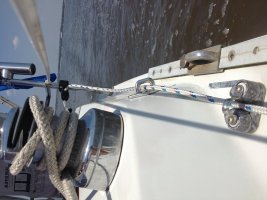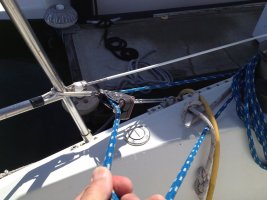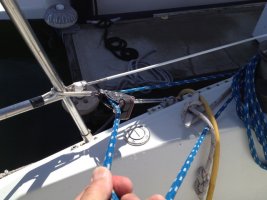We just bought a E32-200 and are getting accustomed to sailing her. There is a great amount of pressure on the furling line while Furling the jib to reef it or haul it even when heading into the wind. The jib furling line is brought aft to a cam cleat a few inches forward and below the most aft port side winch. In this position using the winch means the line travels at a steep angle down through the cleat before heading forward putting a lot of upward pressure on the cleat while hauling the line.
This seems an unnatural configuration. Is this standard?
Again. Thanks for all the responses. It seems our boat was sitting for a long time and manually working the roller furler at the slip to loosen some of the corrosion up to make it easier to pull in. Its still not as easy as I would think it should be so a dis-assembly and cleaning with a possible bearing replacement may be in order.
After a good cleaning it works like a champ. its actually fairly easy to furl the jib now. Boat must have been sitting much more than we thought.
This seems an unnatural configuration. Is this standard?
Again. Thanks for all the responses. It seems our boat was sitting for a long time and manually working the roller furler at the slip to loosen some of the corrosion up to make it easier to pull in. Its still not as easy as I would think it should be so a dis-assembly and cleaning with a possible bearing replacement may be in order.
After a good cleaning it works like a champ. its actually fairly easy to furl the jib now. Boat must have been sitting much more than we thought.
Last edited:

